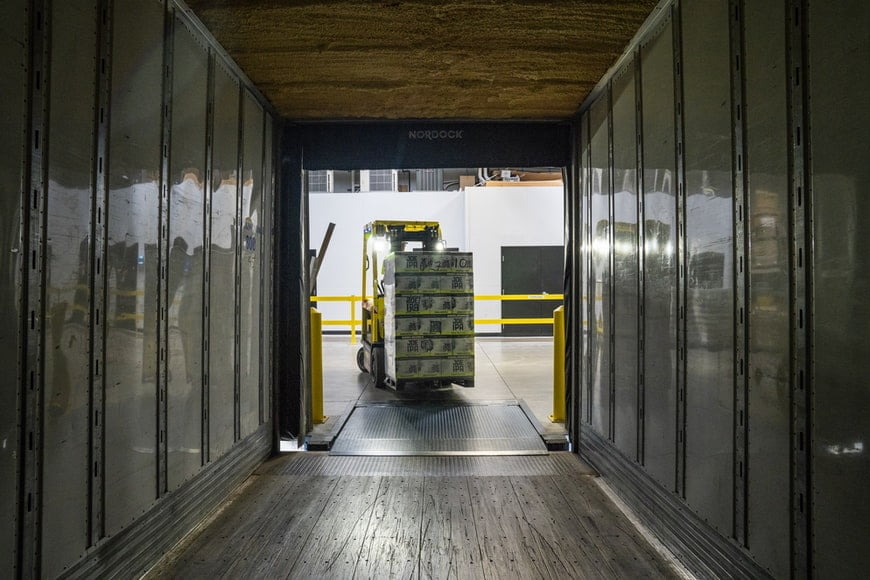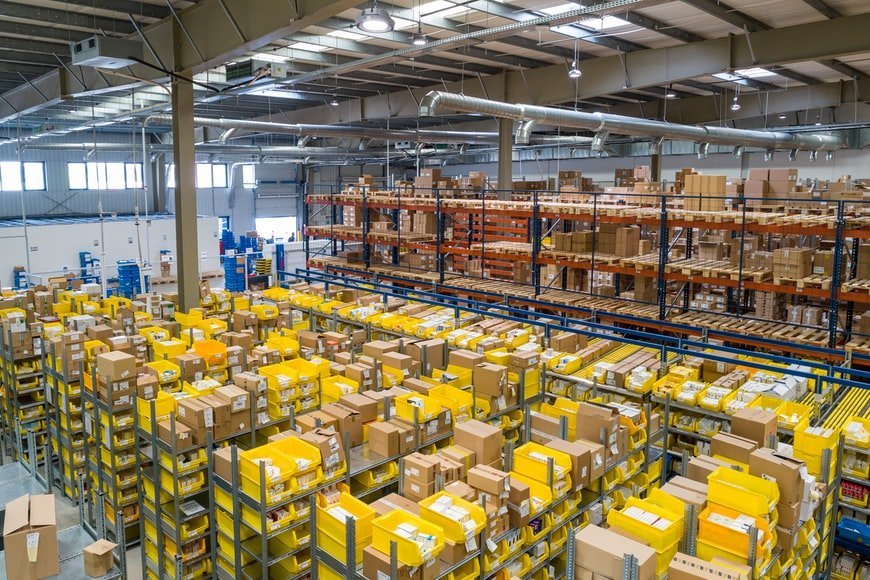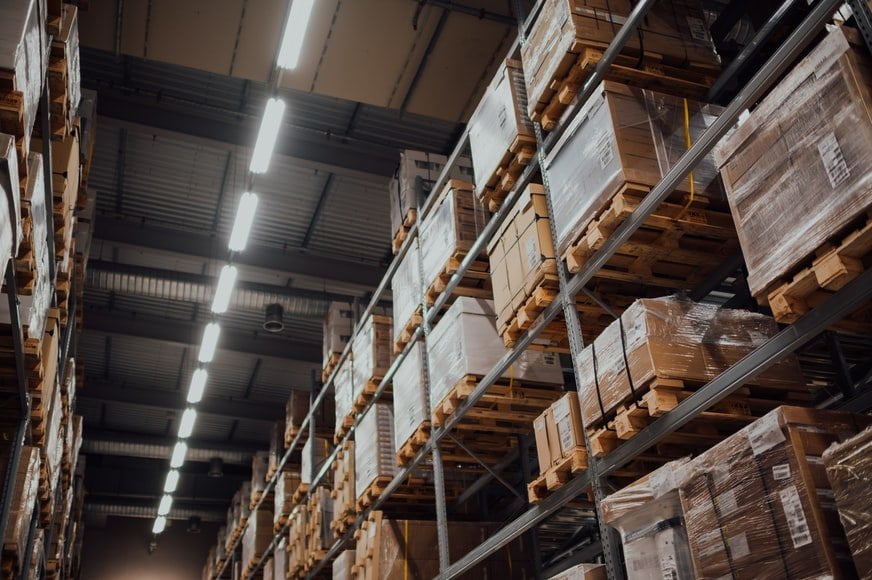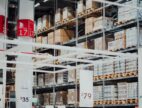Application of IoT in Your Smart Warehouse
by Abdul Aziz Mondal Business Intelligence Published on: 26 November 2021 Last Updated on: 10 January 2025

Fierce competition, challenging employee retention, and fast-spreading e-commerce relentlessly boosts digital transformation in logistics. Probably, it won’t take a lot of time for us to see an army of boxy robots sorting, lifting, and shipping orders in every single storehouse.
In comparison to a few years ago, the cost for IoT-powered tools has significantly dropped, provoking higher interest and application of automatic warehouse solutions. Companies give generous funding in custom logistics software development to optimize their operations, increase revenue, and stand the test of time.
In today’s article, you will find out about the implementation of IoT in smart warehousing, the benefits it brings, and examples of its applications by e-commerce giants.
Application of IoT in Warehousing
1. Smart Equipment
IoT equipment comprises actuators and sensor devices that are embedded in the warehouse objects. Such devices contain barcode scanners with GPS, RFID tags on parcels and pallets, sensors that track humidity and temperature, and wearable sensors.
Instead of collecting data manually, enterprises have it gathered through RFID tags and smart sensors, then stored in a cloud, processed, and analyzed. Integrated sensors also control humidity and temperature inside the warehouse and trucks, neutralizing the risk of damages and inventory losses.
2. Accurate Analytics
RFID tags are able to store significantly bigger amounts of data and transmit it much faster compared to regular barcodes. They can be also used in aggressive environments and operate flawlessly despite dirt, wood, plastic, water, etc., and even be implemented in the body.
Having virtually unlimited service life and low cost, RFID tags have become a popular solution in warehouses – they allow tracking when goods come in or leave the warehouse in real-time, optimize floor layout, and give access to data from distance and without connection to a database of information. The data provided by sensors help make informed decisions in supply chain management, improve safety, and obtain accurate predictions about purchases, storage, and shipment.
3. Asset Management and Automation
The Internet of Things simplifies the majority of manual processes within a warehouse. It automatically verifies service tracking and shipping information, monitors all items available in the warehouse and information about them, eliminating the possibility of human error and saving inventory managers at least 30 hours per month. Shelf sensors and assets also send you notifications if any item is out of stock or located in the wrong place and ensure you take preventative measures in case of emergency.
The Benefits of IoT in Warehousing
1. Cost-effective Inventory and Fast Delivery
Last-time delivery is one of the most cost-consuming operations in logistics. According to estimations, it covers up to 30% of all delivery costs. The implementation of IoT-enabled tools allows to solve this challenge as well as optimize all planning and management processes.
Logistic companies get a chance to cut down on a number of employees as a big share of manual tasks to become automated and held by the machines; enhance employee training process and shorten it with voice-driven guidance platforms and VR glasses; calculate the shortest and most economical routes for delivery.
2. Improved Inventory Management
IoT-enabled sensors improve inventory management in various ways. First of all, RFID tags track every single item within the warehouse, its location, exact quantity, entrance, and exit information, etc. Secondly, they collect and analyze all this data, ensuring easy access to it for managers, low-stock alerts, and notifications if any products are misplaced.
RFID tags also control temperature and humidity within the warehouse and send immediate warning alerts in case of standards violations, or even theft. Instant updates ensure easier control of item location and transportation conditions and make sure no packages are lost during delivery.
3. Predictive Maintenance
One of the most challenging tasks in warehouse management is ensuring the safety of inventory in the process of transporting and storing them in the right place. Because of the implementation of IoT devices, these challenges can be easily solved. The IoT-enabled device can assess and adjust humidity levels, temperature, and atmospheric pressure this way eliminating the possibility of item spoilage or damage. Predictive maintenance systems also can detect equipment defects at the initial stages, eliminating downtime and reducing repair expenses.
Amazon
Amazon belongs to a shortlist of companies that are globally associated not only with top service but also with constant innovations. In 2012, they bought a robotic company – Kiva Systems and got the ownership of a new breed of robots that can carry up to 750 pounds, reading barcodes on the ground to find the direction. Today, Amazon’s warehouses are home to more than 200k mobile robots that ensure fast and free delivery, allow to store up to percent more inventory, and make employees’ jobs easier.
Alibaba
Chinese e-commerce giant Alibaba launched a warehouse run exclusively by robots in 2018. With the help of guided vehicles called Zhu Que, the company has managed to automate nearly 70% of warehouse operations. Zhu Que is equipped with laser sensors that enable it to recognize objects, scan the environment, and map the most efficient routes.
The robot moves at 5 meters per second, can lift up to 600 kilos, and self-charge for 5 minutes to work 8 hours. According to Alibaba, Zhu Que helped to double the number of items sorted per shift from 1,5k to 3k, and decrease the number of steps taken by workers by 10 times.
Ocado
A UK-based online supermarket Ocado not only delivers goods from warehouses to customers but also produces and sells robots they use for other groceries. The robots can process 3,5 million items weekly and perform all manual tasks such as sorting, lifting, packing, and shipping. Automation also saves a lot of space inside as goods in the Ocado warehouse are stored in piles that are 17 boxes high with the most frequently ordered products on the top and the least ordered at the bottom.
Bottom Line
The application of IoT technology has transformed the way manual operations are held within a warehouse. Total automation, predictive analytics, and optimization of every single process make companies embark upon a digital journey with robots as their comrades. This doesn’t mean that human employees are left behind; vice versa they receive more accurate data and make fewer mistakes. Such symphony of human and robot cooperation enhances security and productivity in the warehouse, optimizing business needs and operations.
Read Also:





































































































